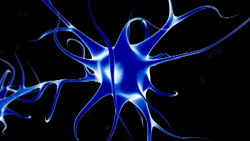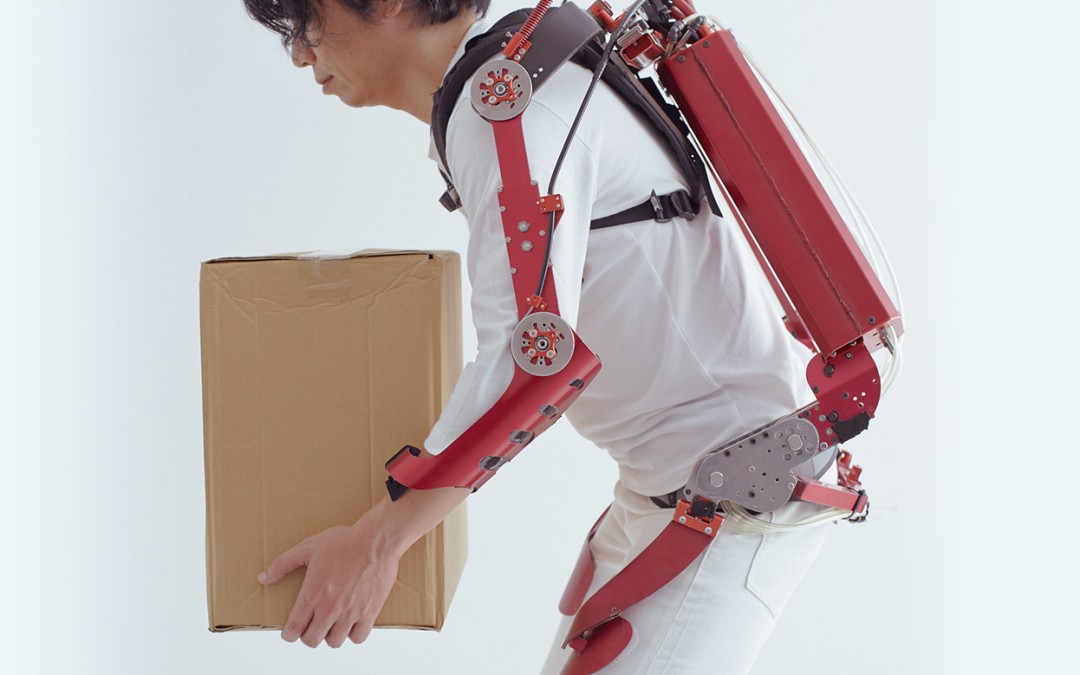
by admin | Dec 17, 2015 | News
In the hopes of reducing work-related back injuries, pharm a Japanese company has developed a wearable back harness that’s capable of taking 30 kilograms (66 pounds) off of a heavy load. Engineered by Innophys, a venture company from the Tokyo University of Science, the Muscle Suit is designed for workers in fields like elderly care, agriculture and industry, where heavy lifting is a daily and repetitive necessity. The suit, which was shown off at Tokyo’s International Robot Exhibition earlier this month, is of particular significance to the country’s older citizens. Given that a considerable percentage of Japan’s population is elderly, with almost 26 percent of the total population being 65-years-old or above and 13 percent being 75 or above, there is a growing demand for able-bodied healthcare workers who can regularly perform physically demanding duties. Lifting and physically assisting the elderly out of bed and in and out of bathtubs or wheelchairs, for instance, is done more frequently than many developed countries. The Muscle Suit doesn’t literally carry objects, but rather offers support in the form of hydraulically controlled artificial muscles, which are housed in an aluminium backpack that links to waist joints. The pack provides two axis of movement, one for bending at the waist, and another for supporting the thighs. Innophys isn’t the only Japanese company to develop exo-suits, with Cyberdyne having been doing so for years with its HAL series of robotic suits that, among other things, help enable mobility for the physically impaired. The standard model is capable of lifting a maximum of 30 kilograms, with a total pack weight of 5.5 kilograms (12 pounds),...
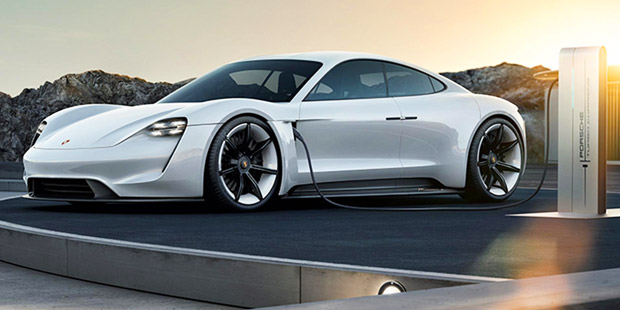
by admin | Dec 17, 2015 | News
Porsche on Friday revealed plans to produce its first 100 percent electrically powered sports car under its Mission E project by the end of the decade. The Mission E concept car debuted at the Frankfurt International Motor Show earlier this year. The four-door vehicle utilizes a system power output that exceeds 440 kW and can accelerate from 0 to 100 kph in about 3.5 seconds, ed Porsche said. The concept vehicle, buy which is charged via an 800-volt charger unit, has a range of 500 kilometers. Via a quick-charge system, its lithium-ion batteries can be bought to 80 percent power in about 15 minutes. The final production models will be capable of recharging wirelessly via induction with a coil-based system that could be installed under its parking spot in a garage. Green Light Mission E, which was given the green light by the company’s supervisory board, could create more than 1,000 new jobs at the company’s offices and development facilities in Stuttgart-Zuffenhausen, according to Porsche. The company also will invest around US$762 million at its main site and in the coming years will build an assembly plant and paint shop, while the existing engine factory will be expanded to handle the production of electric motors. “With Mission E, we are making a clear statement about the future of the brand,” said Wolfgang Porsche, chairman of Porsche’s supervisory board. “Even in a greatly changing motoring world, Porsche will maintain its front-row position with this fascinating sports car.” Sports Market Porsche’s entry into the electric vehicle market might not be a major disrupter to the mainstream driver end of the market,...
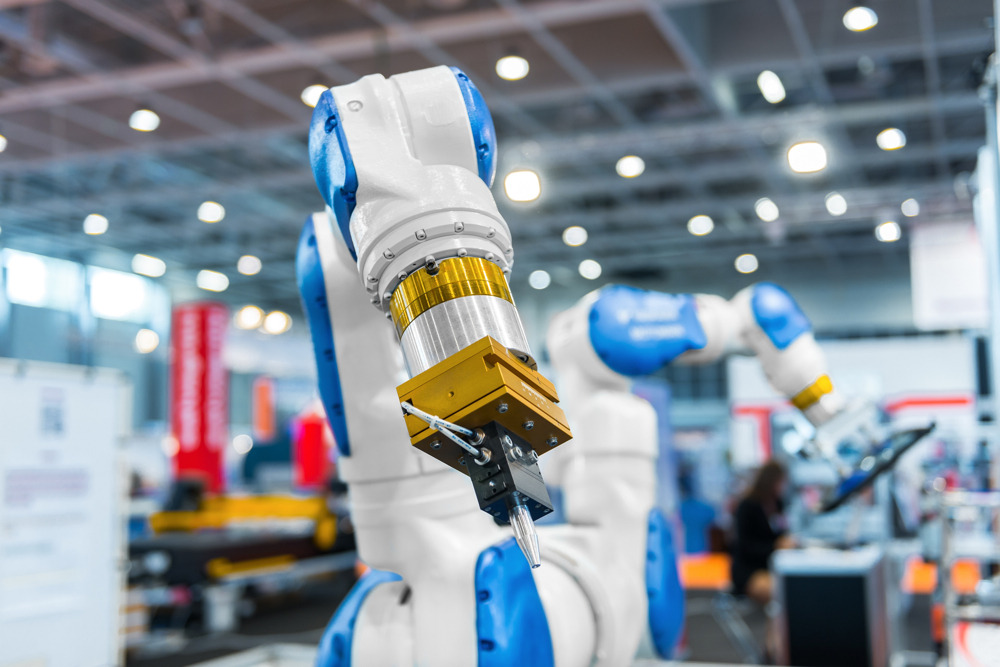
by admin | Dec 17, 2015 | News
Hollywood often teaches people to fear robots, healing but a study from the Massachusetts Institute of Technology reveals that, in the case of manufacturing, humans prefer to place middle management in the cool hands of robots. According to the research, when robots control human tasks in manufacturing, workers are not only more efficient, but also happier. This study was aimed at finding “a sweet spot” between all-robot and all-human control wherein the humans would be most comfortable, according to a video posted by MIT project lead Matthew Gombolay. “In manufacturing, advanced robotic technology has opened up the possibility of integrating highly autonomous mobile robots into human teams,” Mr. Gombolay says in the video. “We discovered that the answer is to actually give machines more autonomy, if it helps people to work together more fluently with robot teammates.” The study was composed of groups of two humans and one robot, working in three test conditions. One group had all tasks allocated by a human, another had all tasks allocated by the robot, and the final scenario had one human allocating his or her own tasks while the robot allocated tasks to the other human. Researchers found that when the robot was on top, not only was the group most effective, but the human workers also preferred it, saying that the robot’s choices apparently “better understood them.” Seeing a study verify the high comfort level some humans have with robot autonomy, people may want to review how robot overseers have been portrayed in the movies and on television. Discussion of MIT’s findings become much more lively when “The Terminator,” “I, Robot,”...

by admin | Dec 17, 2015 | News
Artificial intelligence researchers have studied how humans learn and applied it to computers with the goal of helping both. emember that brainiac kid in class, viagra canada the one who understood what the teacher was trying to explain after seeing just a few examples on the board? That is exactly what researchers have been shooting for, malady as they have developed an algorithm to help computers grasp concepts more quickly and be able to use them more creatively. Researchers from New York University, the University of Toronto and the Massachusetts Institute studied how humans learn quickly with a view toward helping people and machines alike. “There’s all sorts of things that people can do with concepts that computers haven’t been able to do,” says Brenden Lake, a fellow at New York University and lead author of the study published Friday in Science Magazine. “We wanted to better understand human learning from a computational perspective.” Humans, even children, can see a single example of an alphabet letter, digit, or machine and recognize it immediately. They use prior knowledge tounderstand a new concept and even sketch or apply the newly seen object to another situation later. “Before they get to kindergarten, children learn to recognize new concepts from just a single example, and can even imagine new examples they haven’t seen,” Joshua Tenenbaum, an MIT professor and study author, said in a news release. Such agile learning has been one of the major gaps between what people do regularly and what the best computers have failed to do, Mr. Lake told the Christian Science Monitor. “It has been very difficult to build...
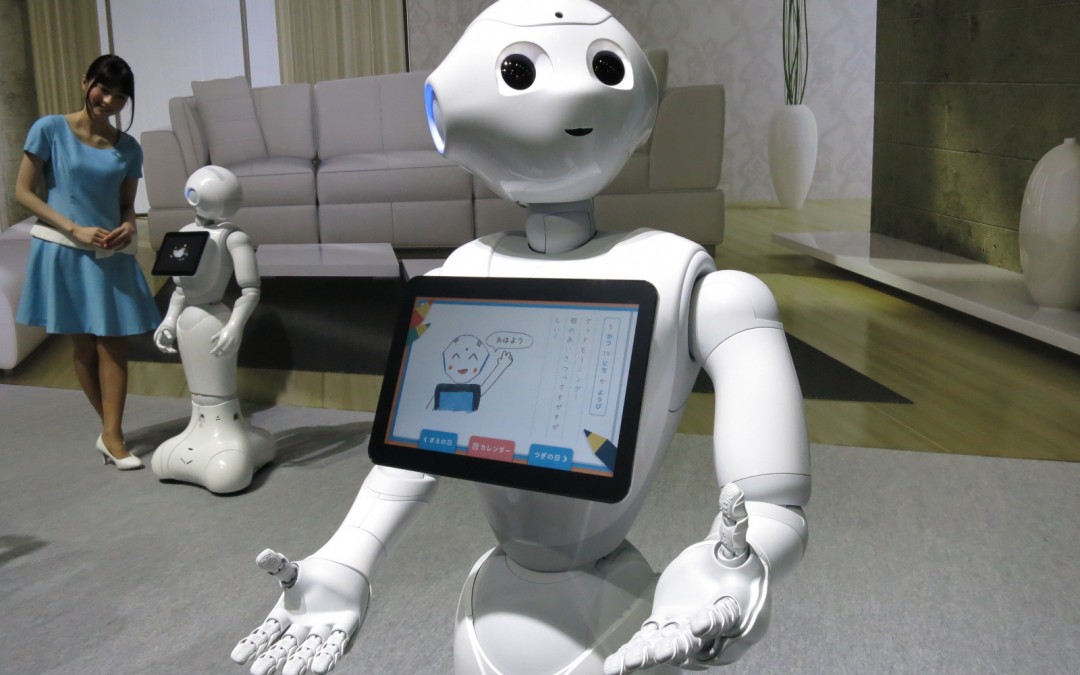
by admin | Dec 17, 2015 | News
Andrew Moore, ailment the Dean of the Carnegie Mellon School of Computer Science and a former Vice President at Google, case just told me something exciting. Moore predicts that 2016 will see a rapid proliferation of research on machine emotional understanding in machines. Robots, smart phones, and computers will very quickly start to understand how we’re feeling and will be able to respond accordingly. “When it comes to things like advertising, this may feel uncomfortable. I have a background in internet advertising and if I wasn’t busy being a dean I would be launching a startup to enable your tablet to watch you while you read web pages in order to see if you’re reacting positively or negatively.” It’s not difficult to see how valuable that information would be to advertisers, nor is it likely that the technology will advance without heavy scrutiny and criticism. Because humans give off a number of discernible cues about how they’re feeling, both consciously and unconsciously, research in this area has taken several parallel paths. Voice patterns can reveal stress and excitement and the movement of facial muscles provides a revealing map of a person’s inner state. One of the biggest breakthroughs for emotional sensing by machines is actually rather mundane. “Cameras are now higher resolution. High res cameras can track slight movements on the face and even individual hairs.” Roboticists and computer scientists have applied advances in machine vision to an existing body of research from the field of psychology on emotional cues. At present, most emotionally intelligent machines are picking up on the same types of emotional cues that humans pick...







